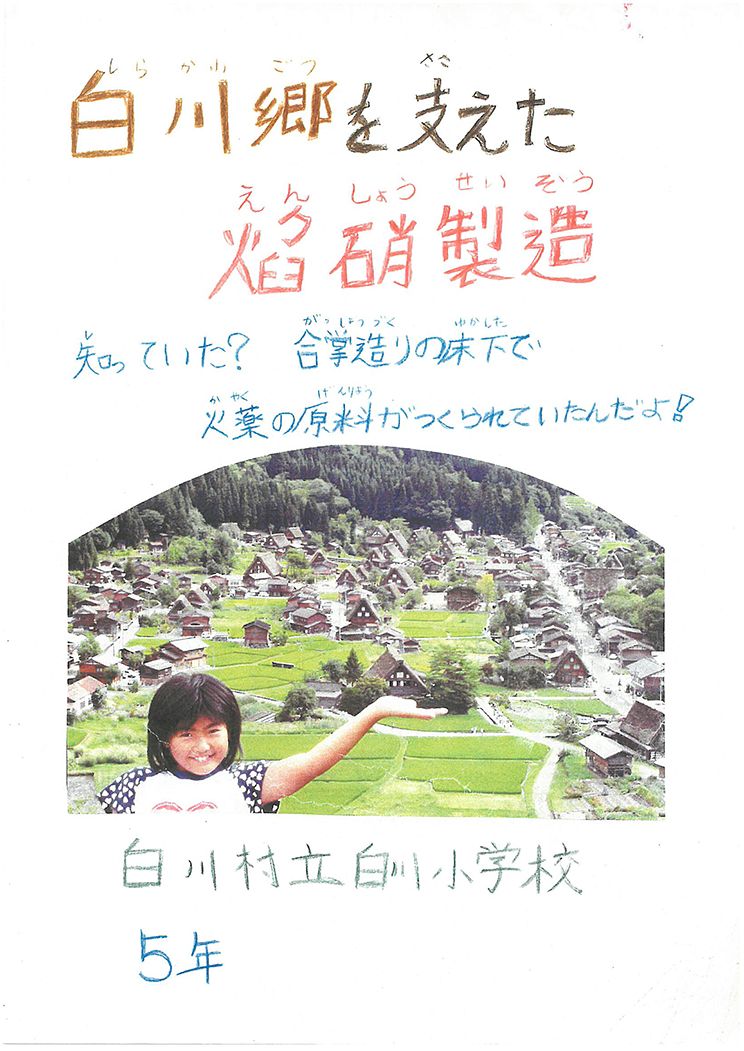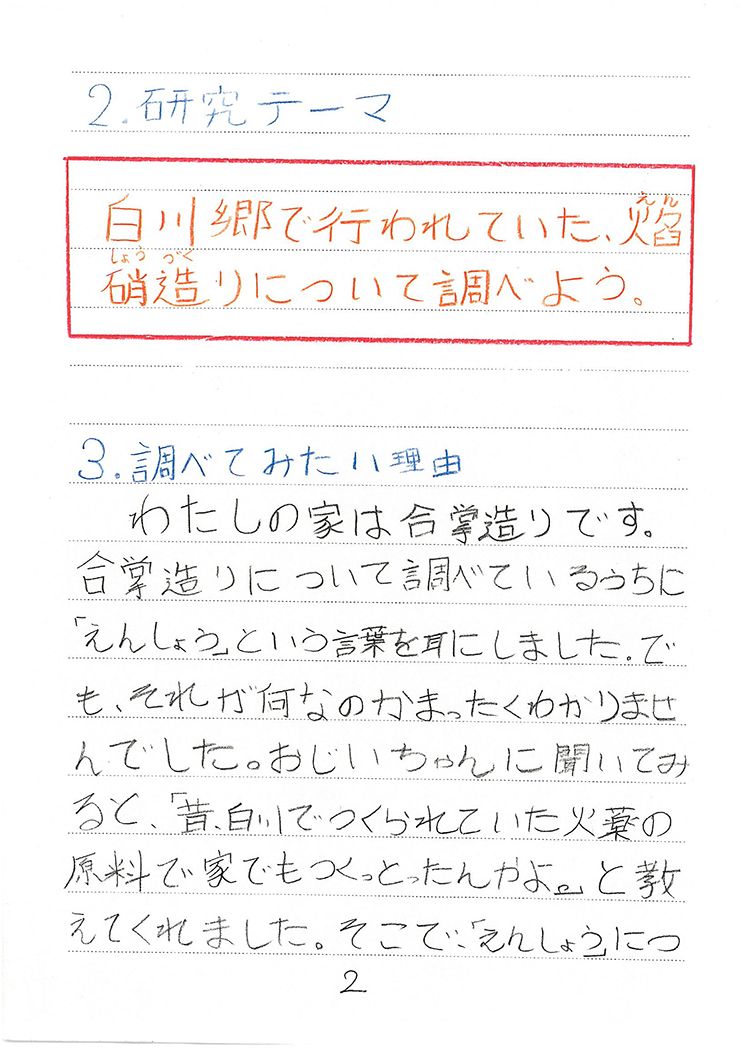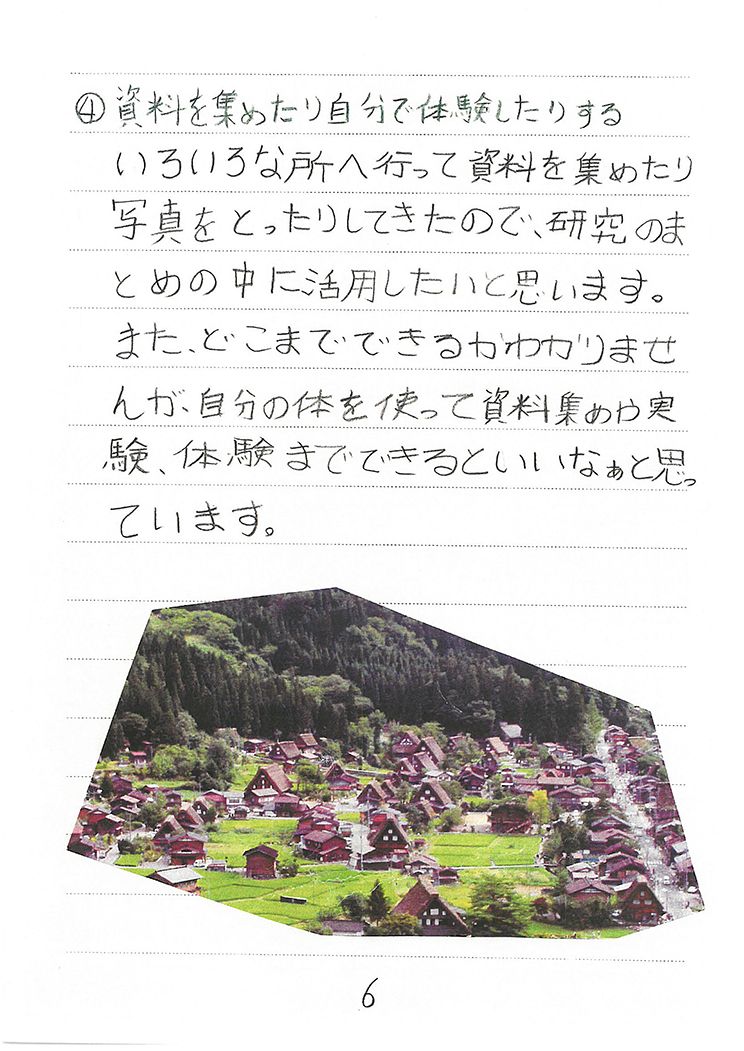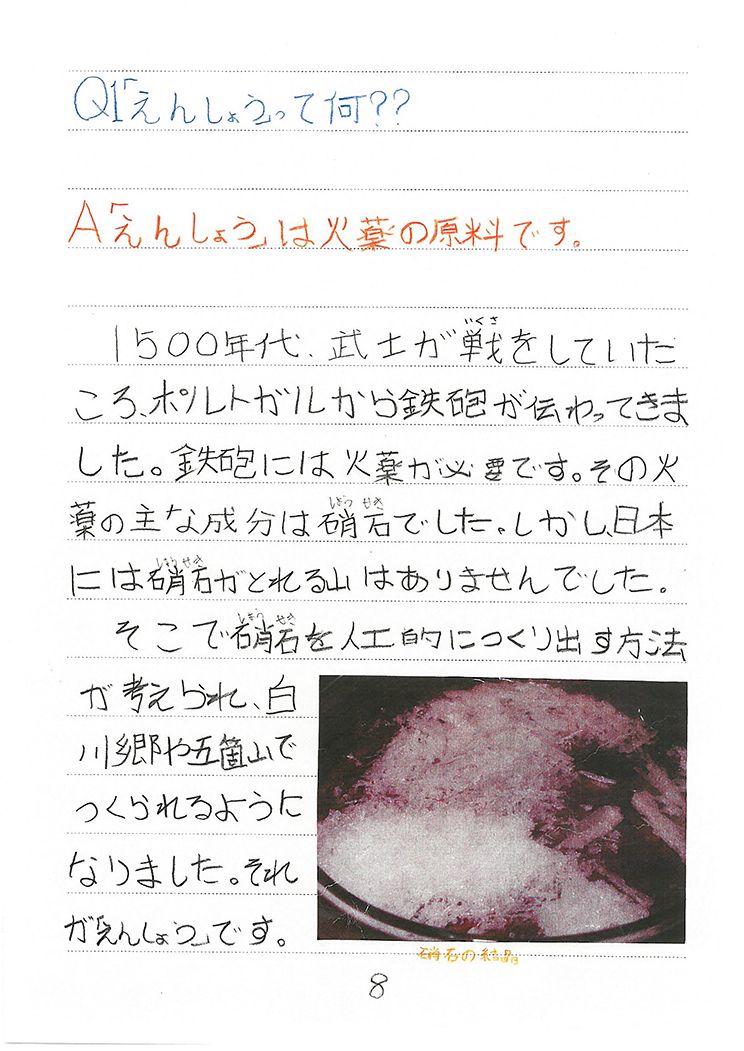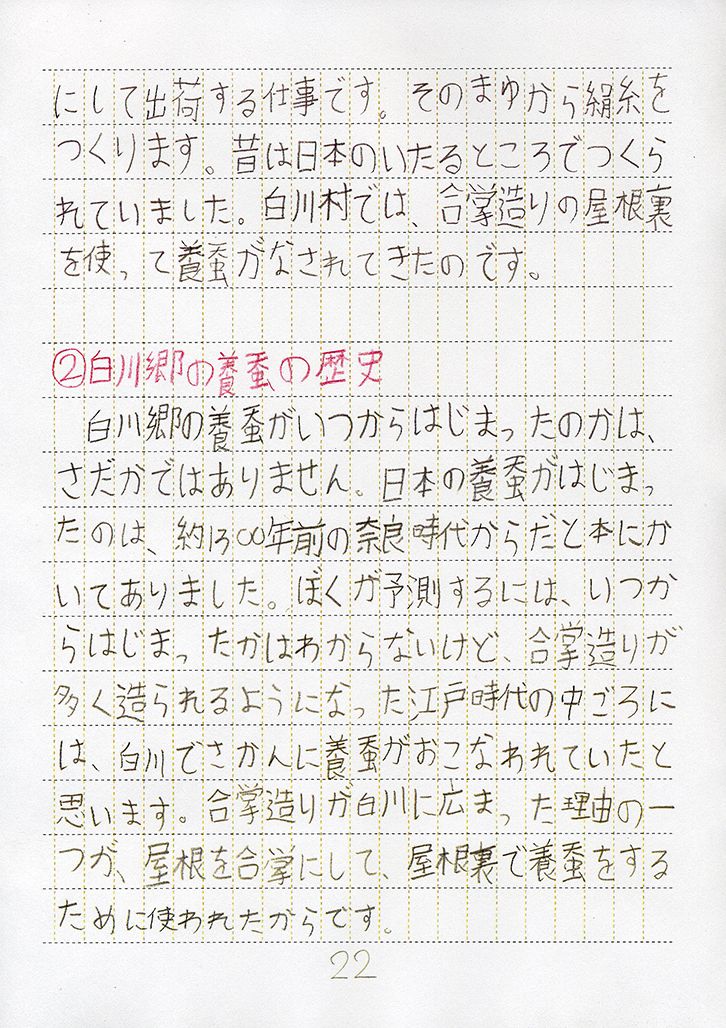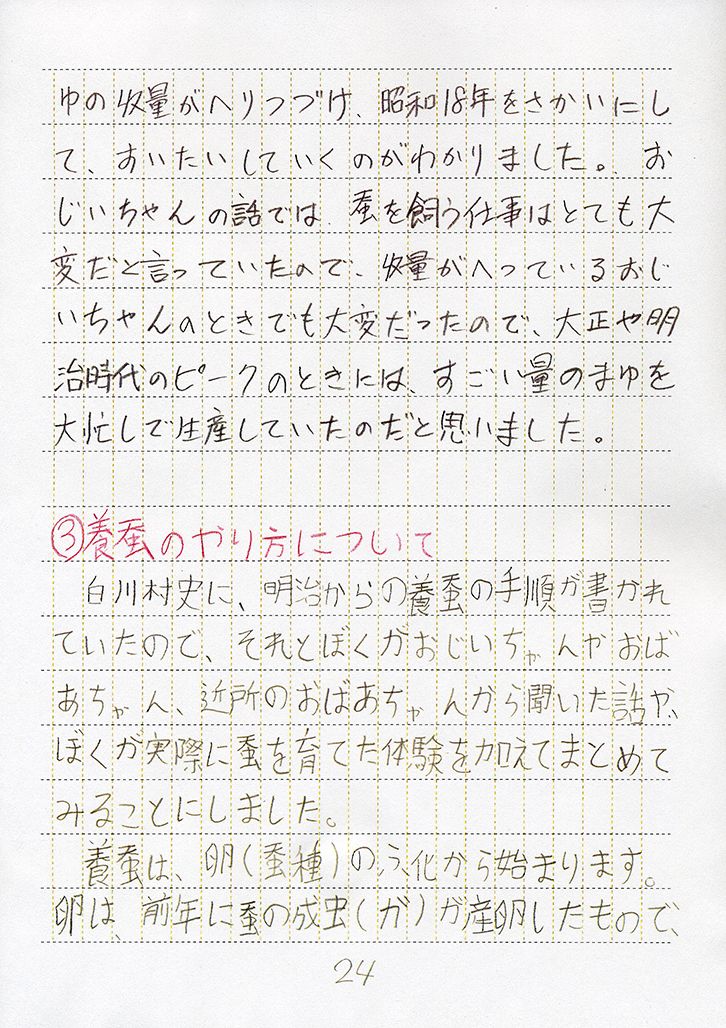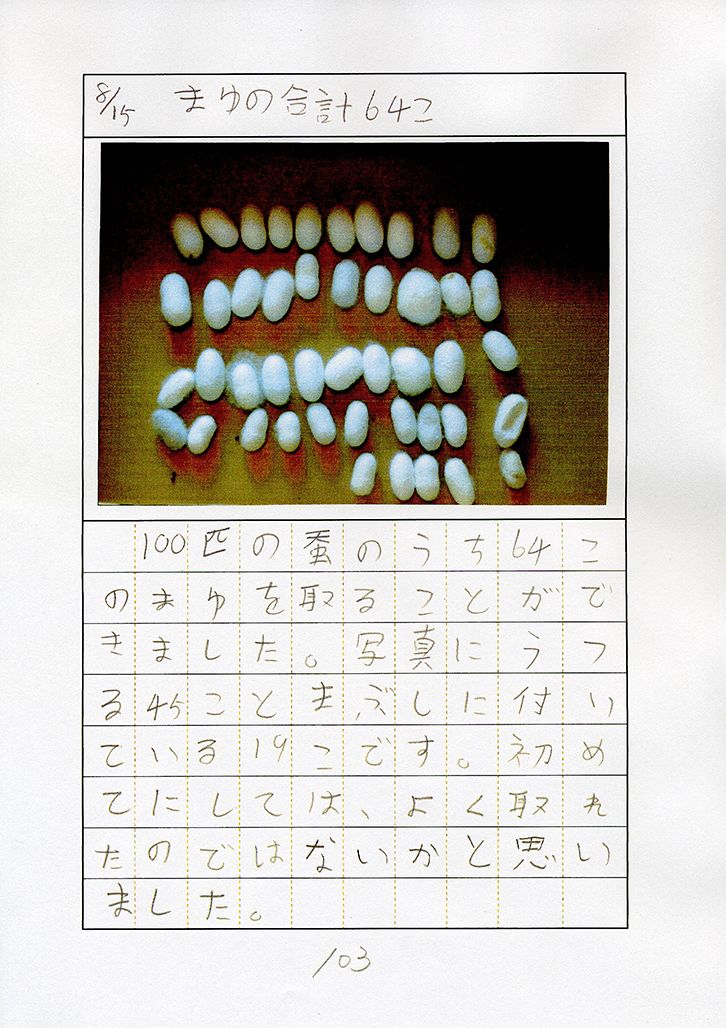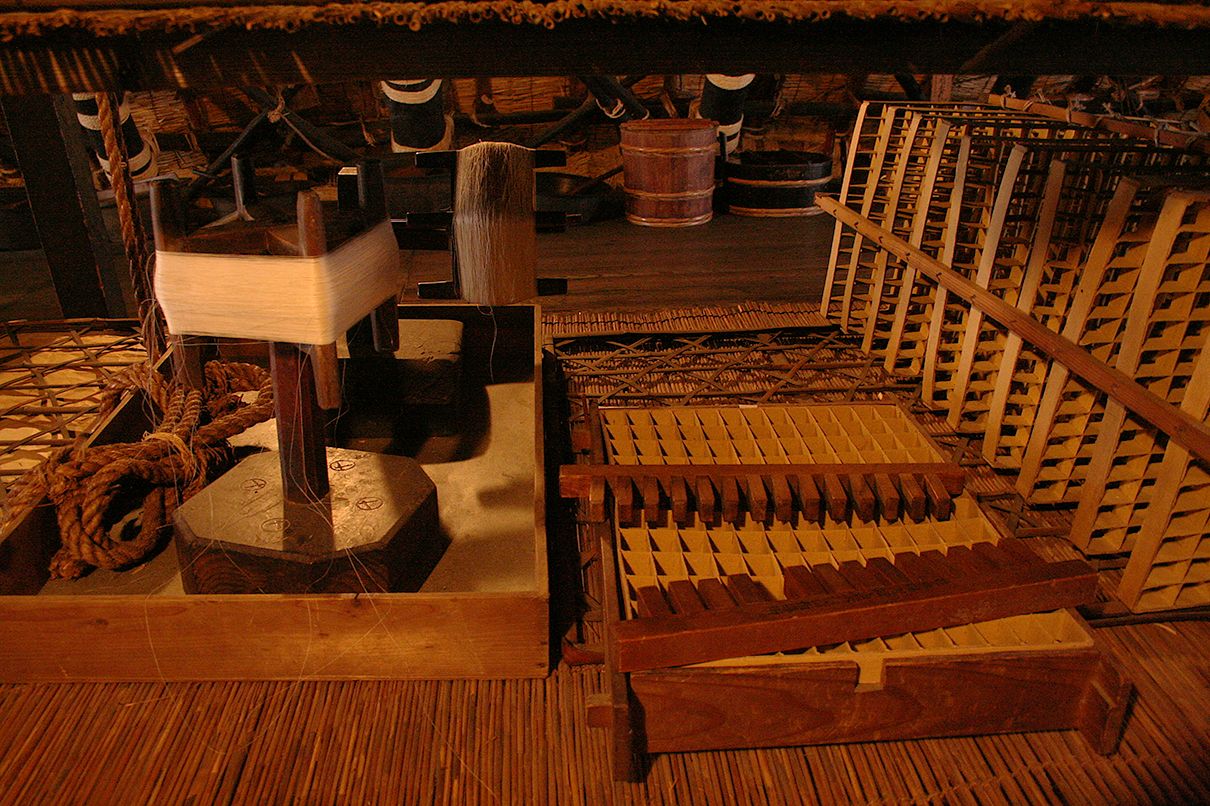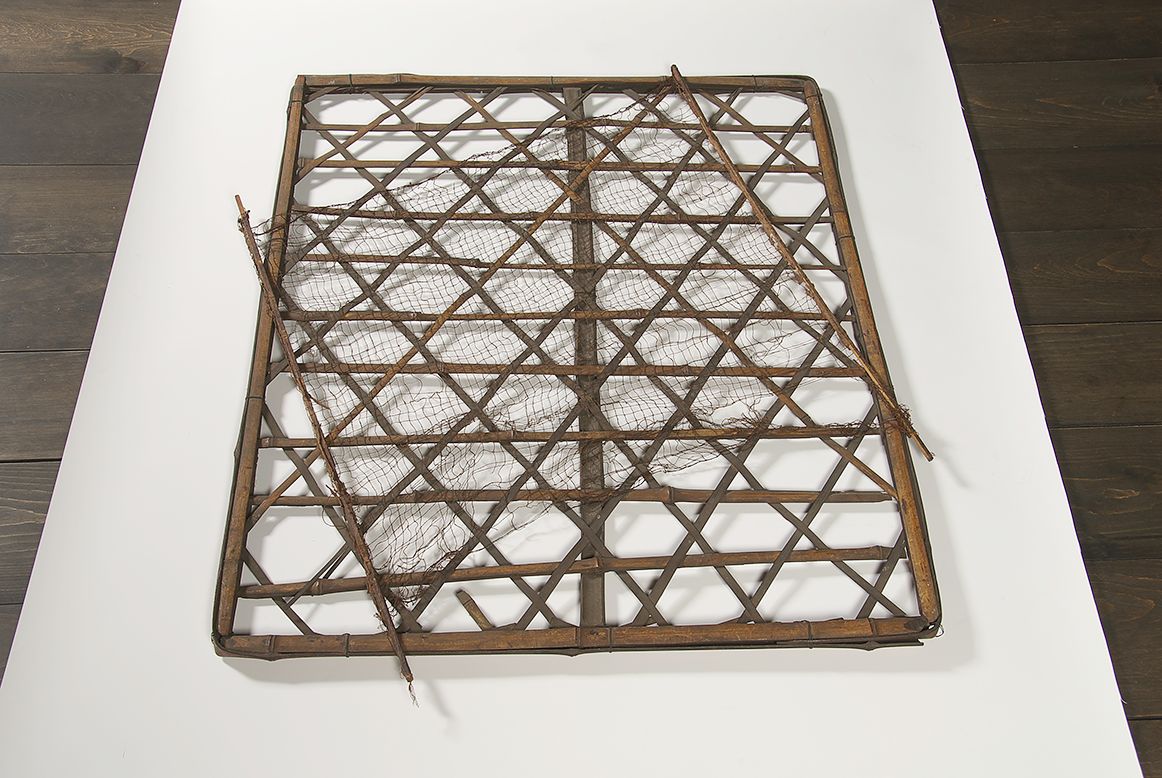Gunpowder (Niter, Potassium nitrate) production
焔硝の生産は、かつては白川郷の重要な産業の一つでした。白川郷でいつ頃から焔硝づくりが行われていたかは明確ではありませんが、白川村史によると、和田家では1688年に焔硝を製造した記録が残っています。和田家は自宅で焔硝を製造するとともに、この地域で製造した焔硝の収集、流通を担っていました。日本では火薬の原料である硝石が産出しないため、焔硝を五箇山、白川郷で草や人尿を用いて生産していました。
和田家令嬢 和田結希さん(小学校5年生)の課題研究(平成15年)を紹介します。
Gunpowder production was one of the most important industries in Shirakawa-go. According to Shirakawa Village history, the way to make gunpowder in the Wada House was introduced in 1688, however it is not clear just when gunpowder production in Shirakawa-go began. The Wada household produced gunpowder at home, and also took responsibility for gathering and distributing the gunpowder in this area. Because niter, one ingredient of gunpowder, could not be excavated in Japan, Gokayama and Shirakawa-go produced niter, with grass and human urine.
A study done in 2003 by Yuki Wada, Mr. Wada's daughter, then in 5th grade.
焔硝造に関する資料
Historical documents about gunpowder production
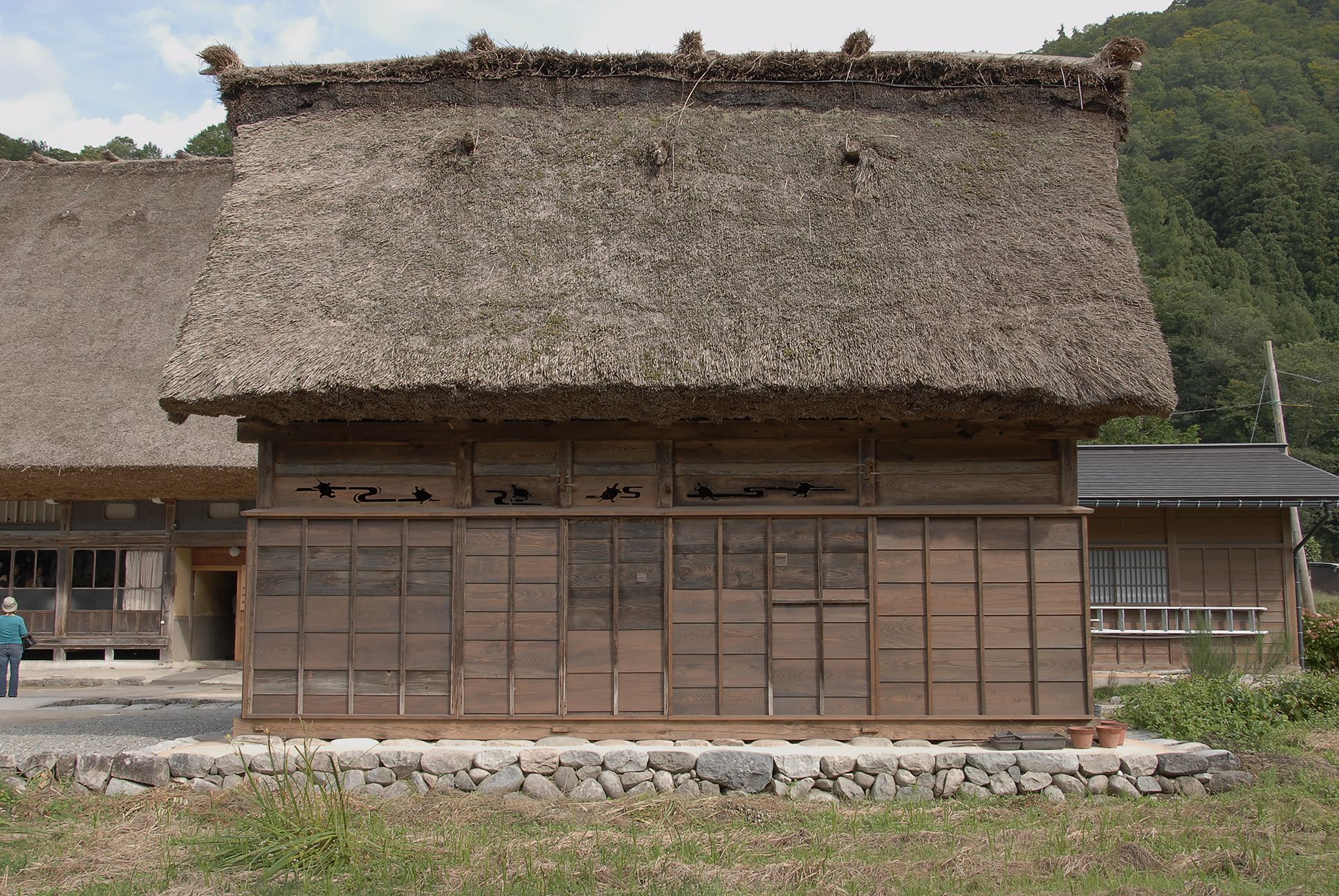
|

|
| 【目録】 | 【目録】 |
| 焔硝の製造に使われた尿の集積場所(厠)と保存容器 The urine collection site (Privy) and the storage containers for gunpowder production | |

|
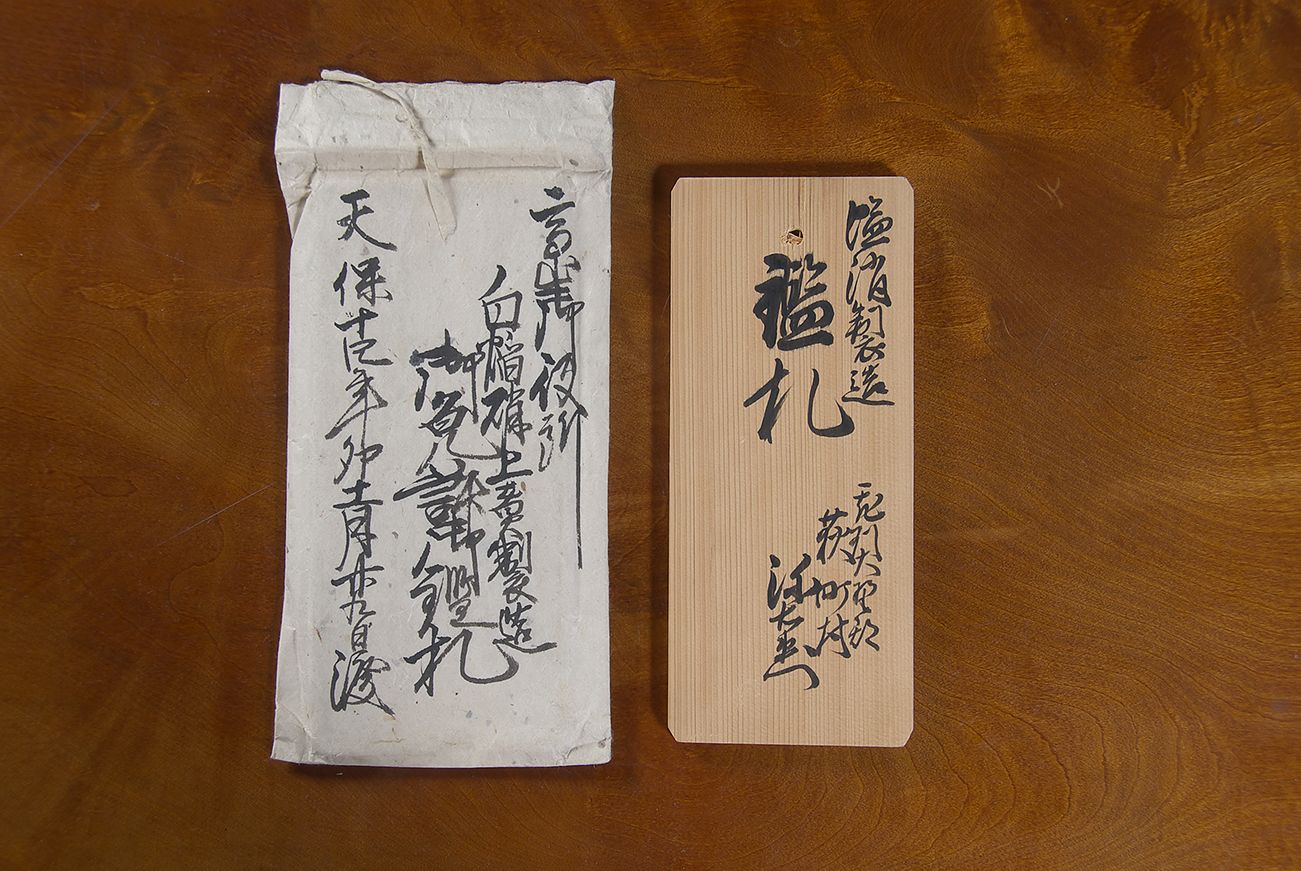
|
| 和田家に伝わる焔硝に関する古文書 【目録】 Ancient documents about gunpowder production at the Wada House | 和田家に伝わる焔硝生産の鑑札 【目録】 An old license for gunpowder production, Wada House |
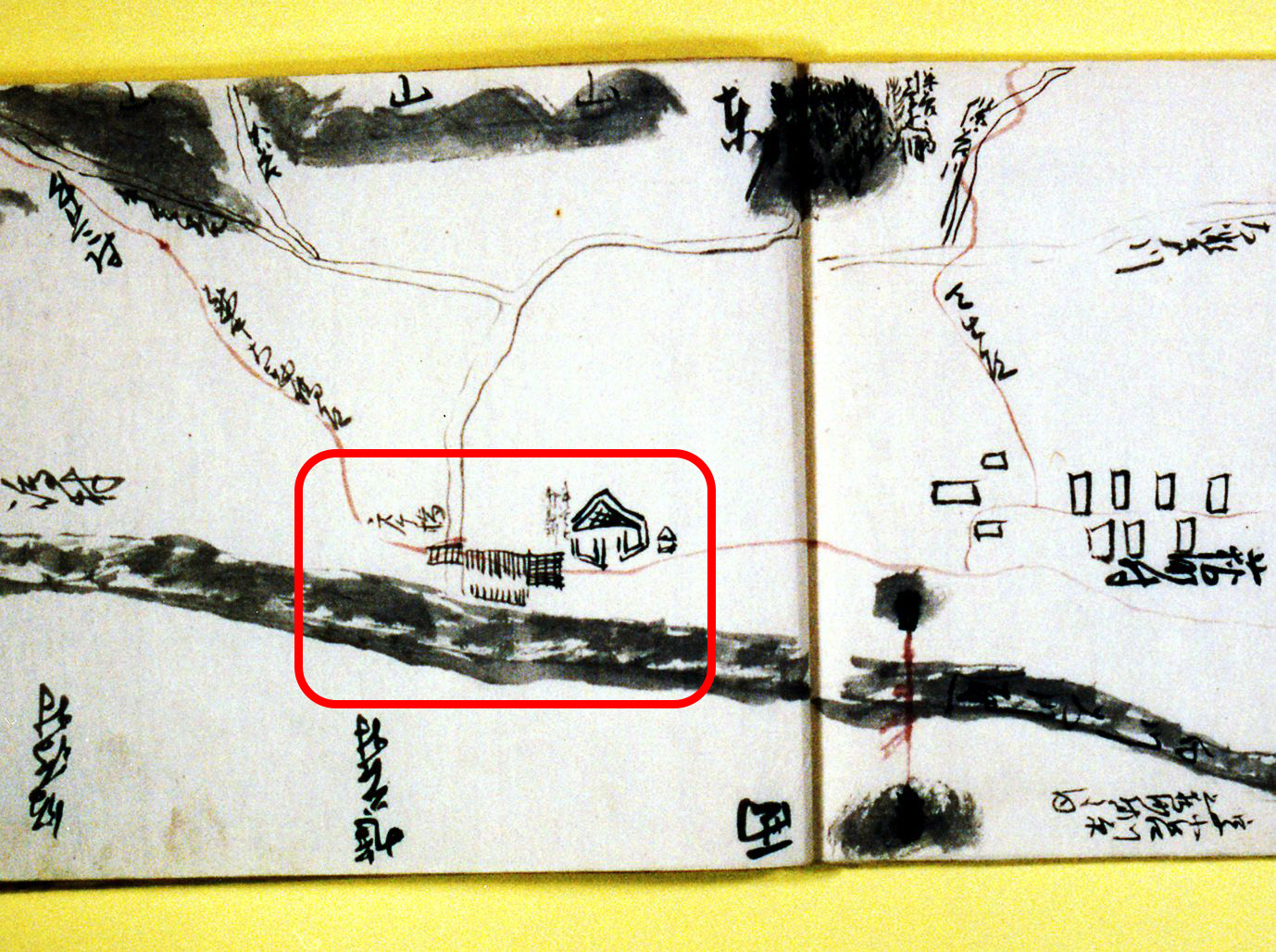
| 街道に設けられた番所の記録 【目録】 Old records of the guardhouse on the main road |
焔硝は武器に使われるため、製造や流通は厳しく管理され、街道には関所が設けられていて、和田家は口留番所の役人を務めていました。
The gunpowder production and distribution were controlled strictly by the government because they were used with weapons. Special barrier stations, called Kuchidome bansho, were set up on the main road to keep the secret of gunpowder production secure. The head of the Wada family was the government official in charge.
養蚕
Sericulture
この地方の多くの農家では、蚕を育てて生糸の材料となる繭を作らせていました。合掌造りの2階は蚕を育てる好適な場所で、ここで養蚕がおこなわれていました。昔は繭が貴重な収入源になることから、「お蚕様」と呼んで大切に育てられていました。
和田家の子息和田嵩正さんが小学校時代に研究された白川郷における産業としての養蚕の歴史と観察記録の一部を紹介します。
Many farmhouses in this region raised silkworms and produced silk cocoons which, in turn, produce raw silk. The second floor in Gassho-style houses is a comfortable place for silkworm cultivation and sericulture took place here. Since cocoons were a valuable source of revenue in the past, silkworms were called “okaiko-sama” and the people cared for them carefully and greatly respected them. This is a part of the record of observations about the history of sericulture, as an industry of Shirakawa-go, done when Takamasa Wada (a son of Mr. Masahito Wada, present family head) was in elementary school.
合掌造り家屋の2階で行われていた養蚕の道具等
Sericulture tools on the second floor, in Gassho-style houses
これらは2階で行われていた養蚕に使われる道具です。蚕は桑の葉を食べて成長し、糸を吐くころになるとそれぞれが個別に仕切られた部屋に移され、その中で糸を吐いて卵形の繭を作ります。
These are tools used in sericulture on the second floor. Silkworms grow big by eating mulberry leaves, after which they are transferred to a separate area with special divisions so that they could spin egg-shaped cocoons.
